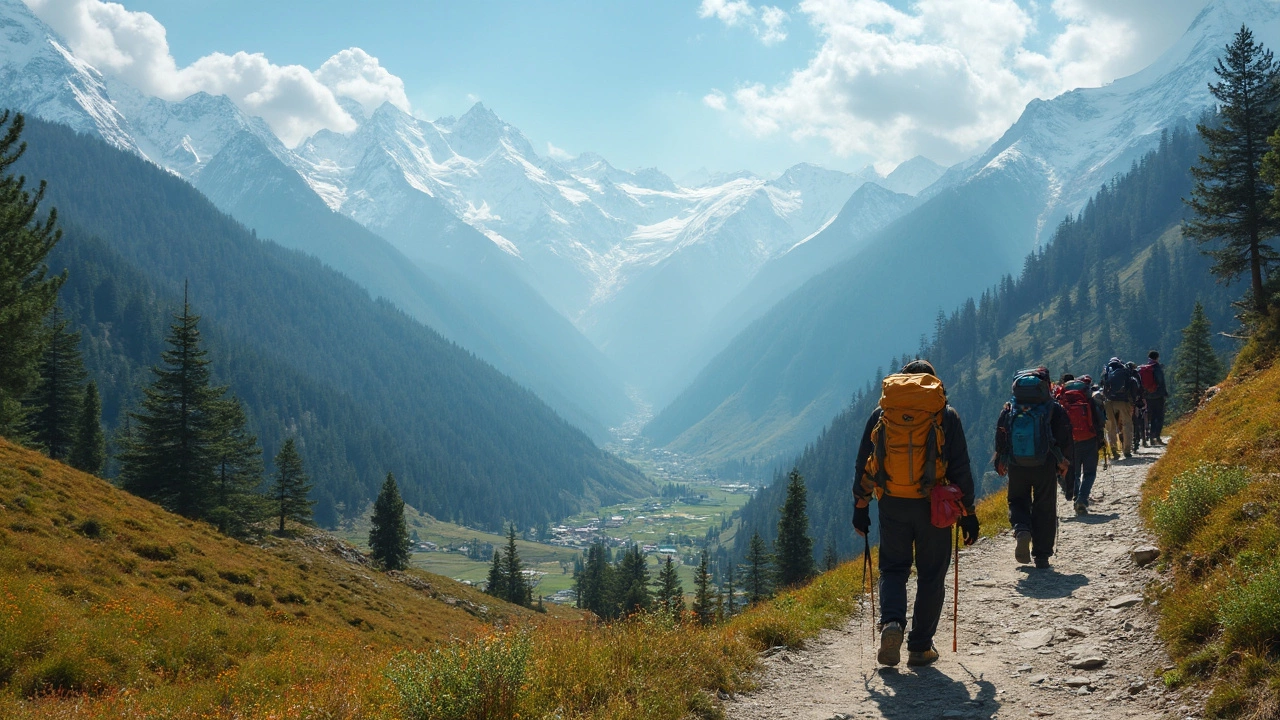SEARCH
Hiking Guides, Tips & Top Trails in India
If you love walking through forests, scaling hills, or watching sunrise from a ridge, you’re in the right place. This page gathers the most useful advice for planning a hike, picking the right gear, staying safe, and choosing the best Indian trails. No fluff – just the stuff you can act on today.
First thing’s first: know why you’re hiking. Are you after a quick weekend escape, a challenging summit, or a cultural walk that passes through villages? Your goal decides the distance, elevation gain, and the gear you’ll need. For a 3‑day trek in the Himalayas you’ll pack a lightweight sleeping bag, sturdy boots, and a rain shell. For a gentle day‑hike in the Western Ghats, a good pair of trail shoes and a water bottle will do.
How to Prepare for a Hike
Start with a simple fitness check. Walk or jog for 30 minutes a few times a week and add a hill or two. If you can comfortably carry a 10‑kg pack for an hour, you’re ready for most beginner routes. Next, map out your trail. Use the 3‑layer rule – a base layer that wicks sweat, a mid layer for insulation, and a shell to block wind and rain. This combo lets you add or remove clothing as the weather changes, which is crucial in places like Uttarakhand where mornings are chilly and afternoons can get hot.
Don’t forget basic safety gear: a map or offline GPS app, a small first‑aid kit, a headlamp, and a whistle. Pack food that’s high in energy – nuts, dried fruit, energy bars – and enough water (at least 2 liters per person per day). If you’re hiking in remote areas, bring a water‑purification method or know where safe sources are.
Top Hiking Spots Across India
India’s terrain is incredibly varied, so you can find a trail for every skill level. Here are a few crowd‑pleasers:
- Triund, Himachal Pradesh – A 9 km round‑trip with stunning views of the Dhauladhar range. Perfect for a one‑day trek.
- Chembra Peak, Kerala – Offers a heart‑shaped lake and a moderate climb through lush tea gardens. Ideal for beginners who want a bit of altitude.
- Sandakphu, West Bengal – The highest point in West Bengal, giving clear views of four of the world’s five highest peaks. Requires 4‑5 days but the scenery is worth every step.
- Araku Valley Trails, Andhra Pradesh – Combine coffee plantation walks with gentle forest paths. Great for a relaxed weekend.
- Hill Fort Trek, Maharashtra (Rajmachi) – Mix history and hiking as you trek to ancient forts while enjoying monsoon greenery.
Each of these spots has its own best season. For the Himalayas, September to early November offers clear skies and mild weather. In the South, the post‑monsoon months (October‑December) bring cooler temperatures and vibrant flora.
Planning your budget is easier when you break down costs: transport to the trailhead, accommodation (tents, guesthouses, or homestays), food, and any permits. A three‑day trek in the Western Ghats can be done for under ₹5,000 if you stay in simple homestays and cook your own meals.
Finally, respect the environment. Stick to marked paths, carry out all trash, and follow local guidelines. The more you care for the trail, the better it stays for the next hiker.
Ready to lace up your boots? Pick a trail, pack your three layers, and hit the path. Happy hiking!

Trekking vs. Hiking: What’s the Real Difference?
Ever wondered what sets trekking apart from hiking? This article breaks down the real differences and why it matters, especially if you’re eyeing India’s most amazing trails. Get practical advice for both beginners and serious adventurers. Find out which activity is right for you, along with tips to make your next outing safer and more fun. Discover some sweet Indian spots perfect for each, and avoid the classic blunders newbies often make.
Continue reading